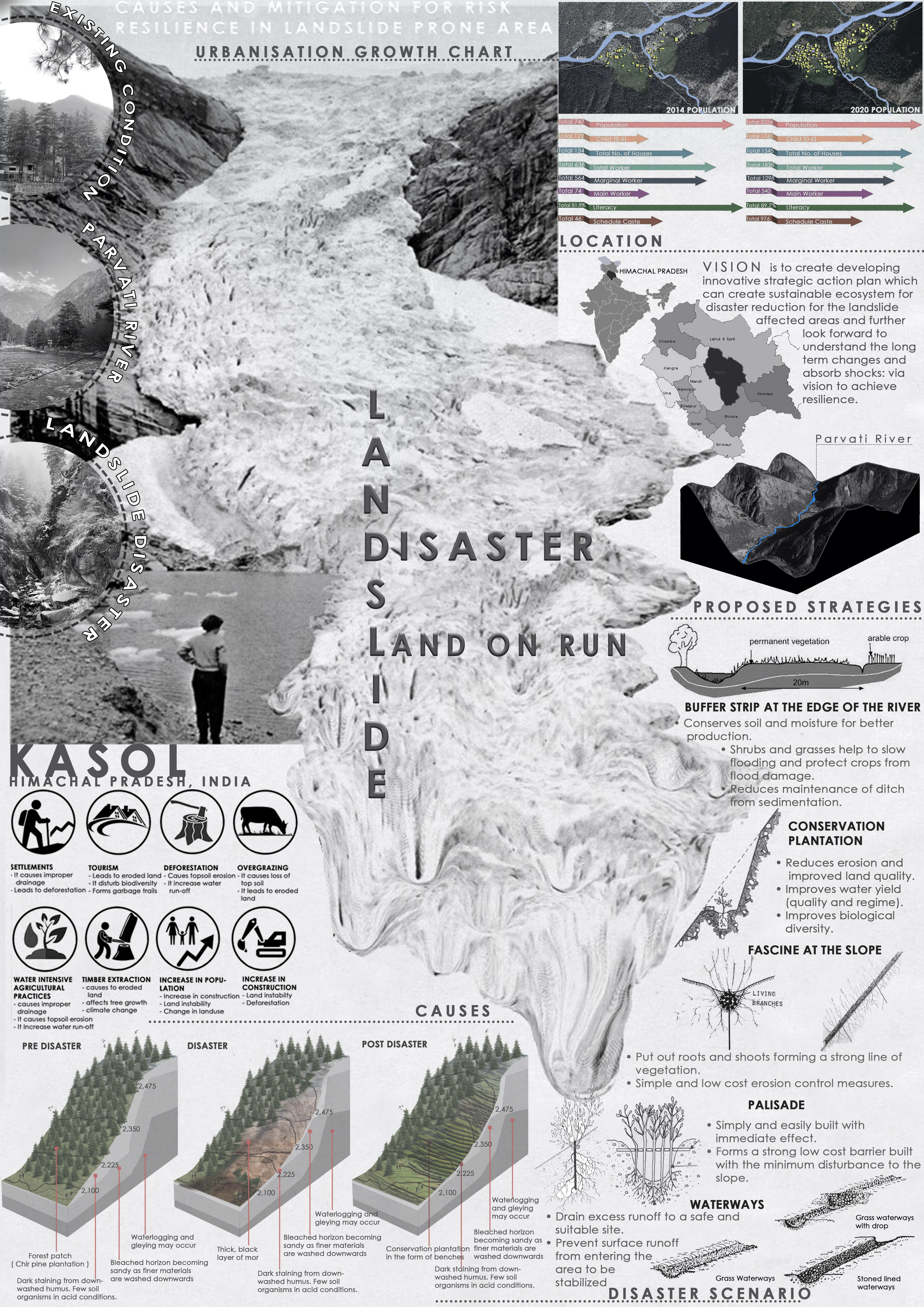
Narrative
Landslide disasters have fetched global concern in recent years. The ubiquitous disasters cost enormous human fatalities and billions of economic losses around the world. Based on Global Fatal Landslide database 2004-2016, globally in 4,862 distinct landslide events 55,997 fatalities were recorded earthquake triggered landslide events were not taken in account in this study . Himachal Pradesh, India, faces a high-level risk from landslides. Rapid, poorly controlled growth is creating a dense urban environment of seismically vulnerable landslide prone areas. To resolve the interconnected and dynamic danger posed by Kasol’s developing built environment, via understanding physiographic layers and analyzing them to prepare action plan while inferring on strategies that can be used from case studies and research papers on the same. This report provides an overview of the physiographic and ecological dimensions of Kasol in Himachal Pradesh. This report will broadly talk about the Social, Biological and Ecological Dimensions Threats and Opportunities in identifying landslide prone areas around the region. The strategies devised from the case studies and other varied research papers helps us in resolving the design mitigation intervention area.
© Copyright CDRI. All Rights Reserved
